#Isabel Toledo
Text
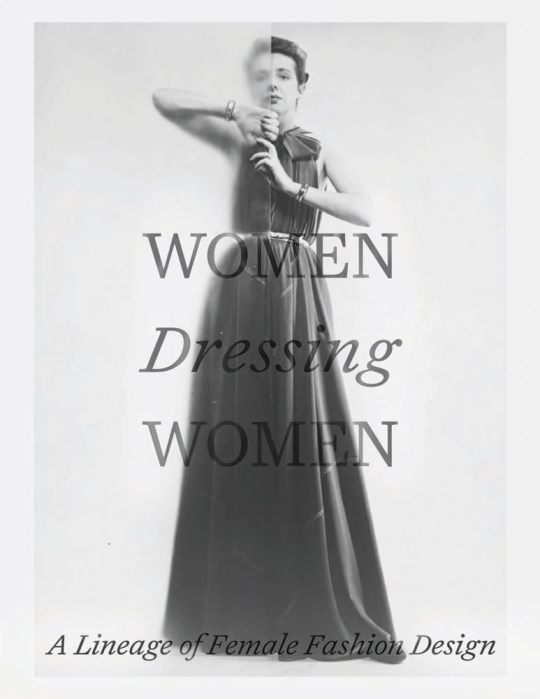
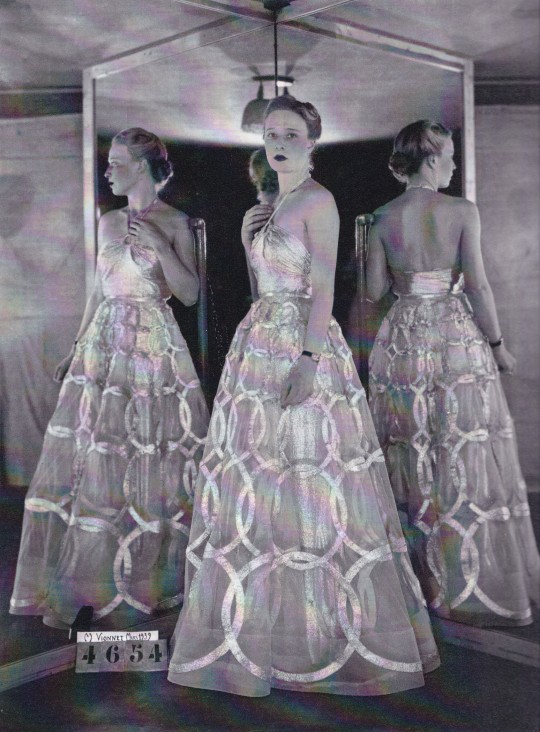

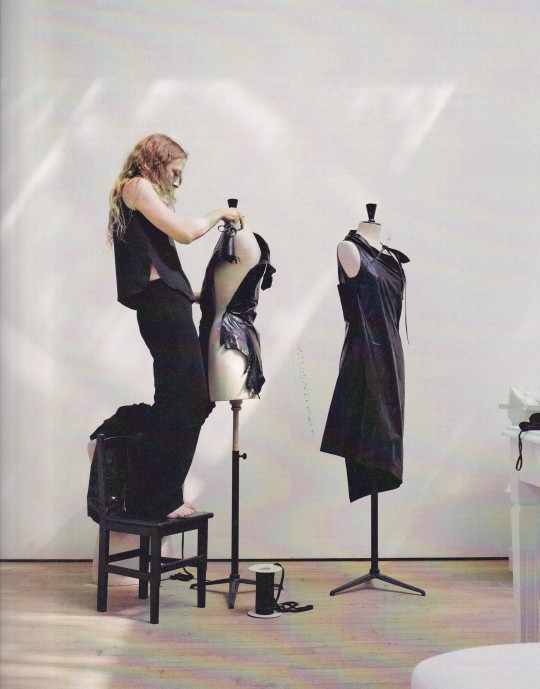
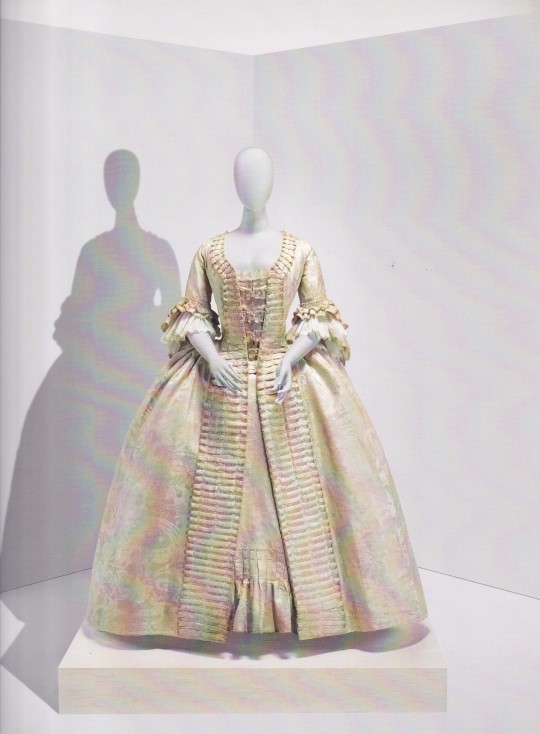
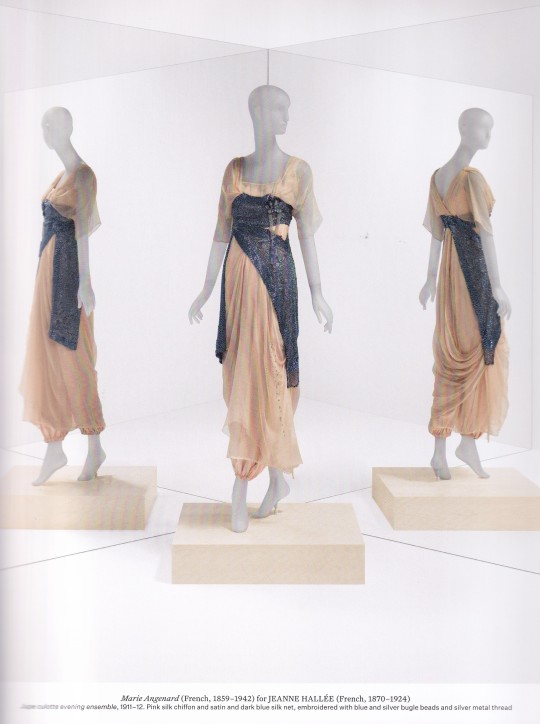
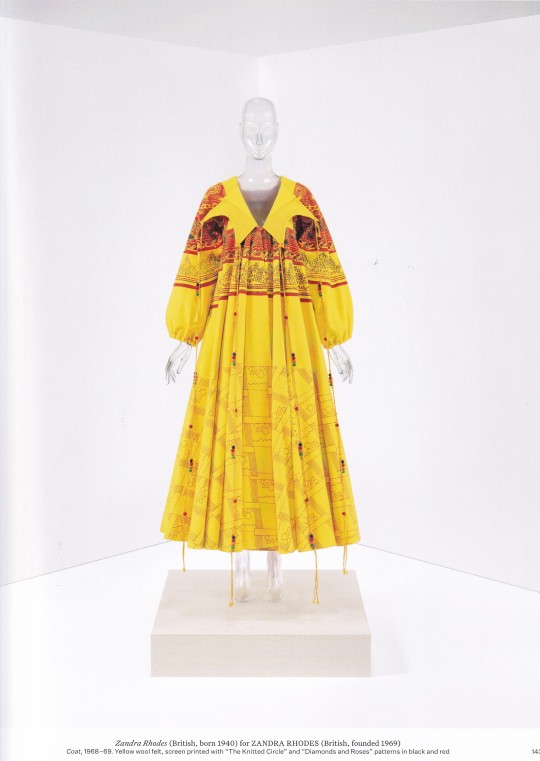

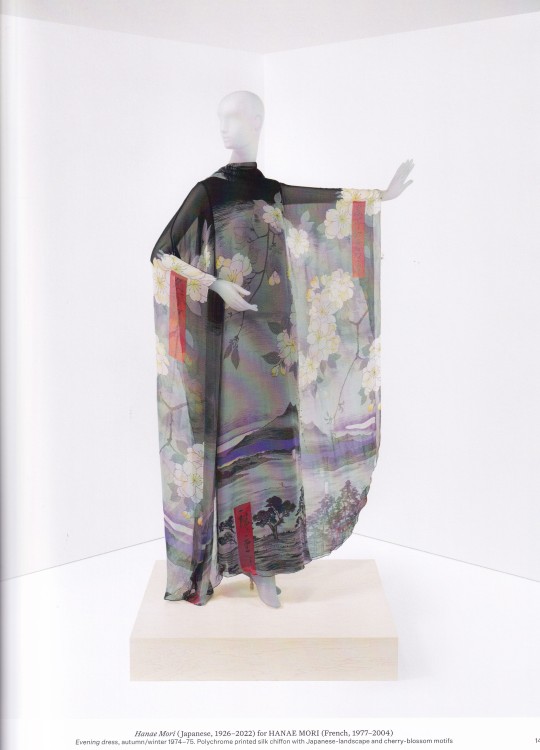
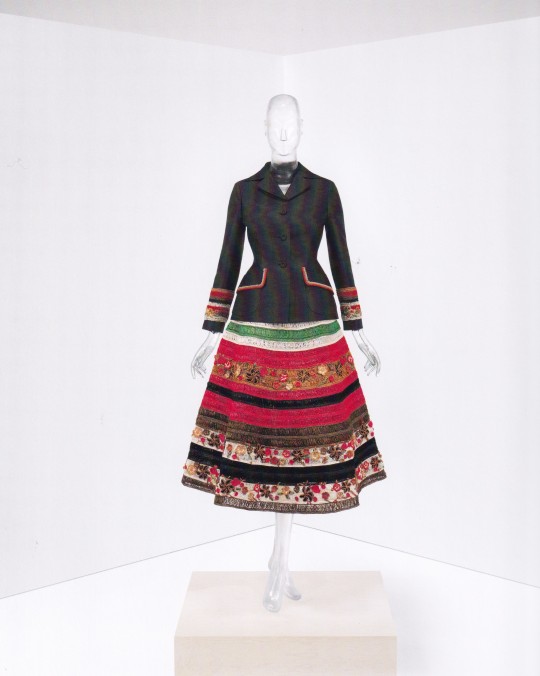
Women Dressing Women
Morgan Stanley
The Met, New York 2023, 212 pages, 24x30,5cm, ISBN 978-1-58839-720-1
euro 49,00
email if you want to buy [email protected]
The Costume Institute's fall 2023 exhibition will explore the creativity and artistic legacy of women fashion designers from The Met’s permanent collection, tracing a lineage of makers from the turn of the twentieth century to the present day by highlighting celebrated designers, new voices, and forgotten histories alike.
Women Dressing Women will feature the work of over seventy womenswear designers, spanning ca. 1910 to today, including French haute couture from houses such as Jeanne Lanvin, Elsa Schiaparelli, and Madeleine Vionnet, to American makers like Ann Lowe, Claire McCardell, and Isabel Toledo, along with contemporary designs by Iris van Herpen, Rei Kawakubo, Anifa Mvuemba, and Simone Rocha.
A catalogue, published by The Met and distributed by Yale University Press, will accompany the exhibition 4 Dec 2023- 3 March 2024
25/12/23
#Women dressing Women#fashion exhibition catalogue#Met New York 2023 2024#women fashion designers#Jeanne Lanvin#Schiaparelli#Vionnet#Isabel toledo#Rei Kawakubo#Hanae Mori#Zandra Rhodes#Miuccia Prada#fashion books#fashionbooksmilano
116 notes
·
View notes
Photo

Isabel Toledo Ready-To-Wear Fall/Winter 1998
Model: Adriana Lima
30 notes
·
View notes
Photo




Adriana Lima for Isabel Toledo spring summer 1998.
#Adriana Lima#isabel toledo#spring summer#1998#fashion show#runway#black and white#goddess#angel#gorgeous
26 notes
·
View notes
Text

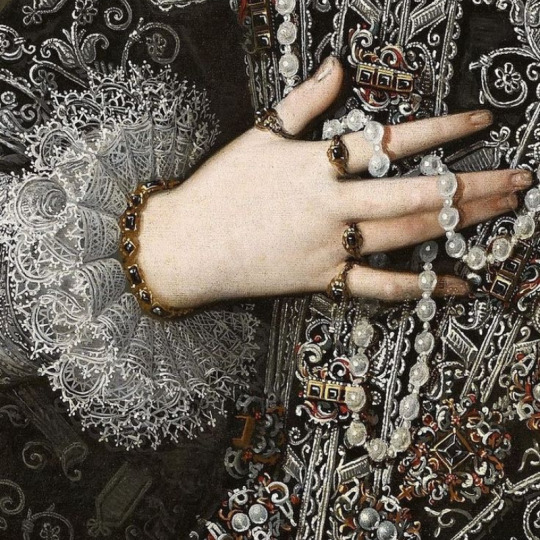
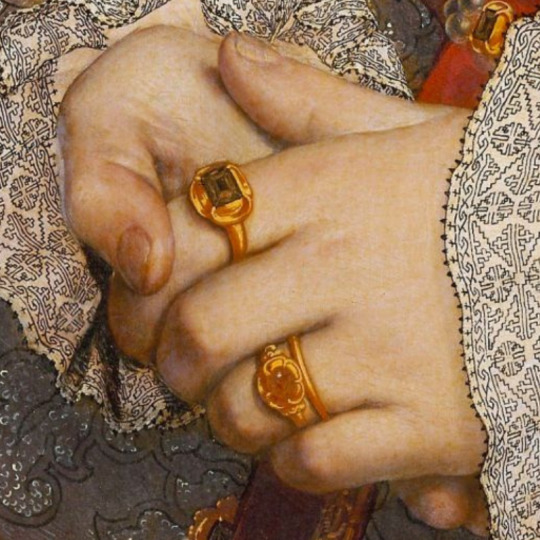
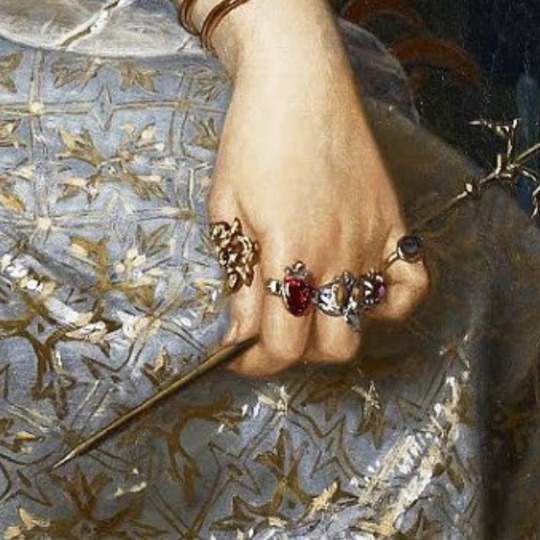


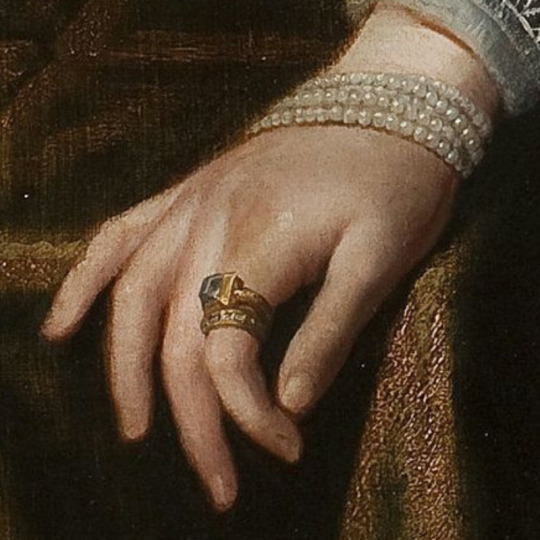

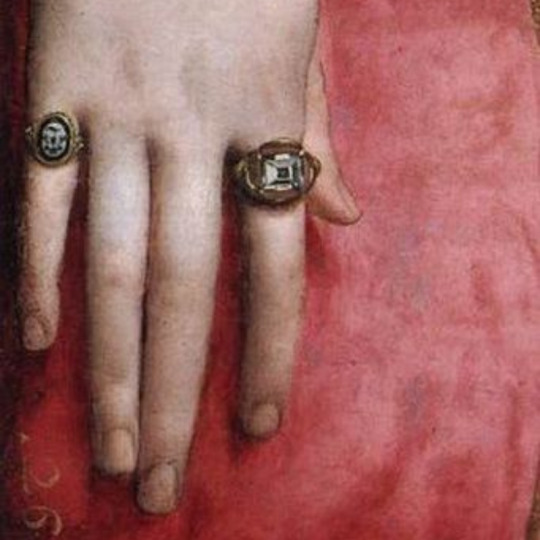

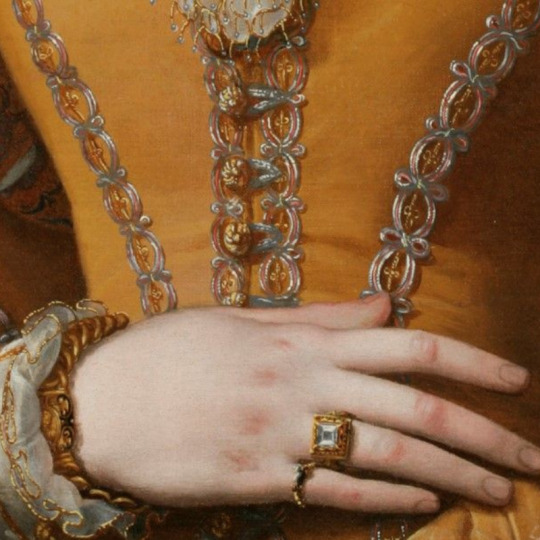
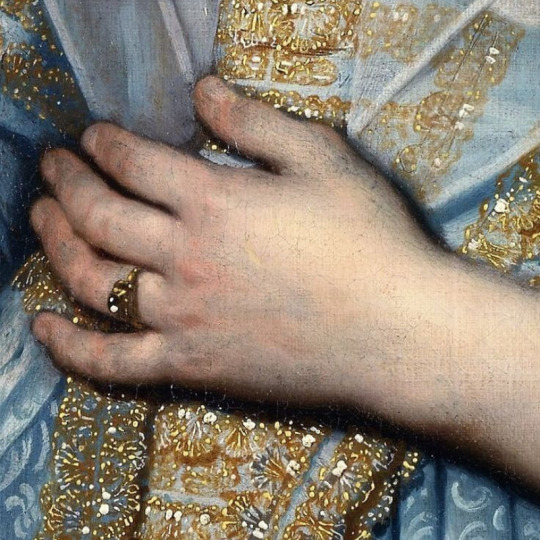


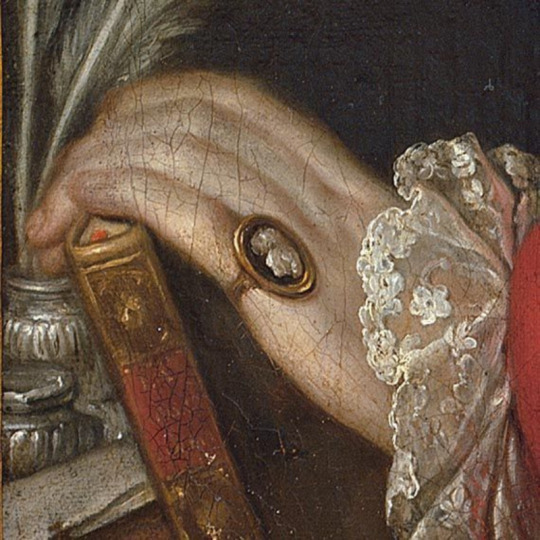
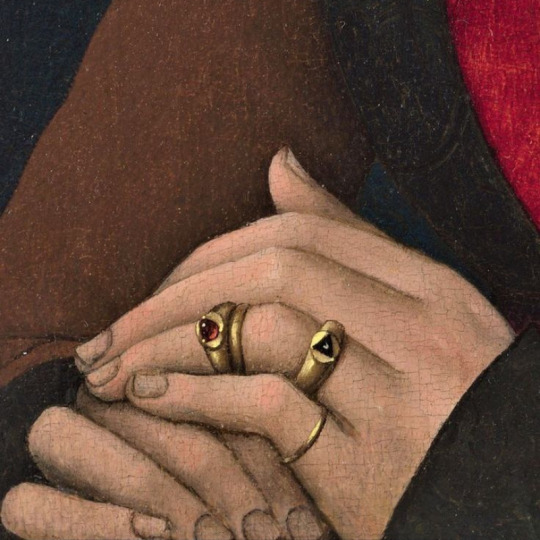

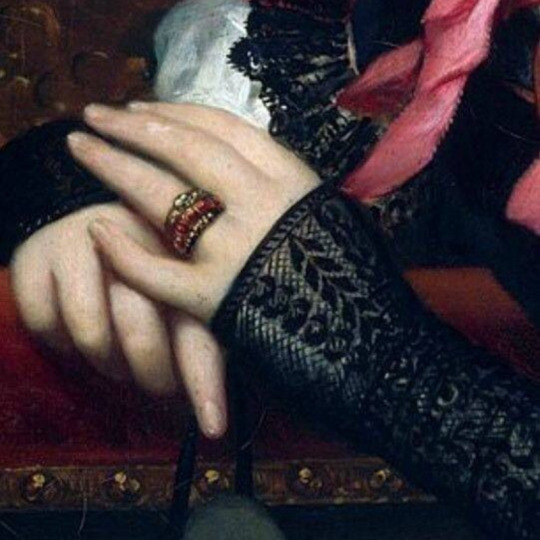

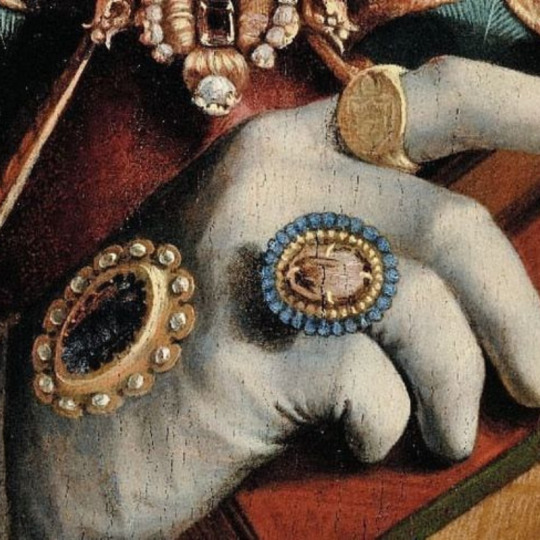
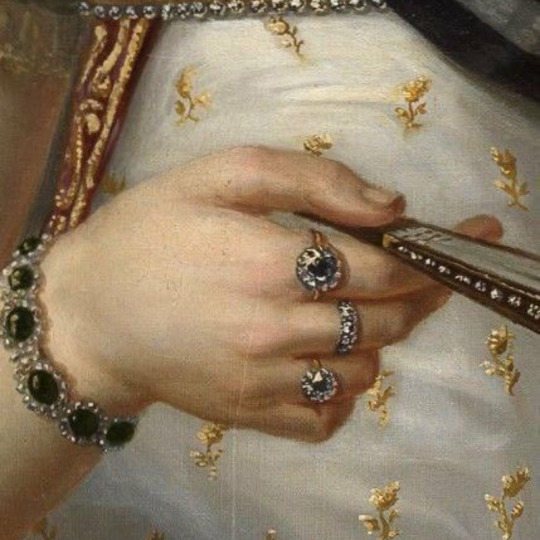
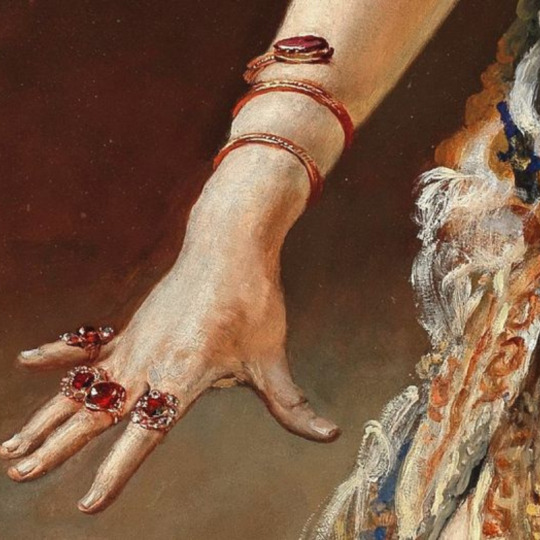
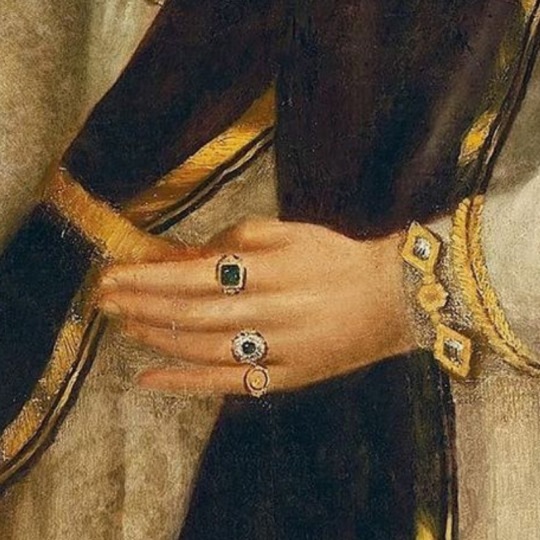


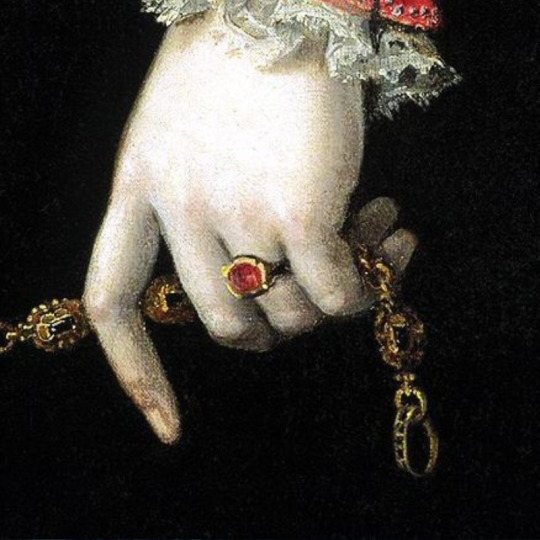
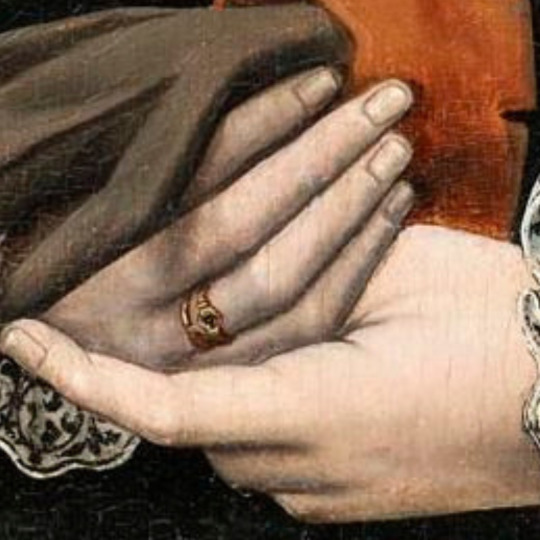
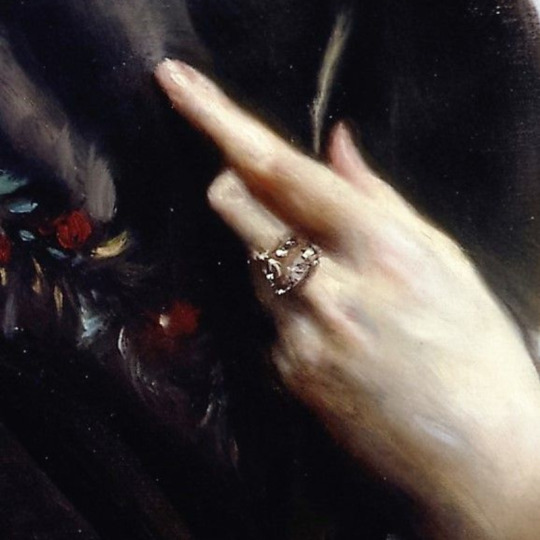
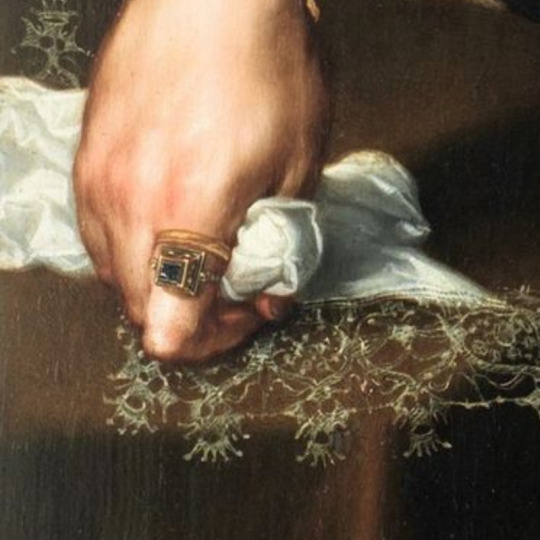

rings + art
#isabel de bourbon by rodrigo de villandrando#i cannot find the artist#portrait of jane seymour by hans holbein the younger#the sorceress by georges merle#portrait of a young woman by nicolaes eliasz pickenoy#portrait of a man by jan gossaert#portrait of johanna martens by paulus moreelse#cant find artist but the portrait is of camilla martelli#eleanora di toledo by angolo bronzino#portrait of pope julius ii by raphael#young lady by alessandro allori#princess albert de broglie by jean auguste dominique ingres#monna pomona by dante gabriel rossetti#portrait of a young zaraysk merchant woman by unknown#portrait of tomas de iriarte by joaquin inza#cant find the artist of this one#female saint holding a book by amico aspertini#looked everywhere but couldn't find artist#can't find artist#painting by lorenzo lotto#maria josepha amalia by francisco lacoma y fontanet#salome by leopold schmutzler#cant find artist nor painting name#a man with a pansy and a skull by unknown#cant find artist or painting#painter is juan pantoja de la cruz#portrait of a lady by william scrots#painter is gustave jean jacquet#portrait of a woman by maybe marie schuurman#portrait of a lady by gortzius geldorp
3K notes
·
View notes
Photo

Luisa Isabel Álvarez de Toledo (deceased)
Gender: Female
Sexuality: Bisexual
DOB: 21 August 1936
RIP: 7 March 2008
Ethnicity: White - Spanish
Occupation: Nobility, aristocrat, historian
#Luisa Isabel Álvarez de Toledo#Luisa Isabel Alvarez de Toledo#lgbt history#wlw#lgbt#female#bisexual#1936#white#spanish#nobility#aristocrat#historian
61 notes
·
View notes
Photo

Luisa Isabel Álvarez de Toledo
Support Making Queer History on Patreon
Send in a One-Time Donation
Email Making Queer History: [email protected]
Follow us on:
Pinterest, Twitter, Instagram, Facebook
130 notes
·
View notes
Text
youtube
#history#royal history#lindsay holiday#philippe I duke of orleans#queer#queer history#philippe de lorraine#henriette anna of england#louis xiv#armand de gramont#elizabeth charlotte of the palatinate#anne lennard#armand charles de la porte de la meilleraye#charles II#aphra behn#her history#henry of prussia#blainville#count la roche laymon#christian ludwig von kaphengst#frederick II#isabella of bourbon-parma#joseph II#maria christina of teschen#ludwig viktor of austria#luisa isabel alvarez de toledo#leoncio gonzalez de gregorio#liliana maria dahlmann#ivar mountbatten#mavendra singh gohil
0 notes
Note
What's the difference between espanol and castellano?
They both mean "Spanish" but there are some nuances; for your purposes the short answer is most likely that the difference will be español is the language as a whole as "Spanish", and castellano is taught in schools
There's a little more to it, but I'll explain below
-
The main difference between the two is that castellano is best translated as "proper Spanish" while español is just "Spanish"
In other words, a native speaker might speak español but castellano is the kind of Spanish taught in schools. It's not a one-to-one analogy but you can sort of think of it like "English" vs. "the Queen's English"
Historically, the Spanish language as we know it today originated in the region of Castile (primarily in the city of Toledo) and because Isabel of Castile funded the American expeditions and her kingdom would come to govern the Spanish-American colonies in Latin America, it became the version of the Spanish language that spread to Latin America
The major nuance here is that castellano is the language of academics, literature, and all things official, while español can be a bit of an umbrella term for all the different dialects and regional variations of the "Spanish" language
In the US, heritage speakers/learners may speak "Spanish" at home but get tripped up by the castellano in schools because castellano requires more precise grammar and spelling and it is very "official"....... so you can sort of think of it like knowing how to speak English but not doing well in an English composition class
Note: Even in Spain itself, castellano is a variety of Spanish as opposed to the Spanish regional variations in other places
-
Additionally, the two words can refer to demonyms [gentilicios] which show where someone is from; almost like nationalities but could be towns/regions etc.
In that case, español(a) means "from Spain" or a person "Spaniard"; and castellano/a means specifically "from Castile"
That meaning is sometimes less applicable if you're not in Spain, but Castile is a region [usually you're talking Castile and León or Castile-La Mancha], so castellano/a can have a geographic or historical
Again as an analogy, try to think of the difference between the United Kingdom and England, and it's something close to that... where if you refer to English as a language it makes sense, but if you call the wrong person "English" you can ruffle some feathers
EDIT: According to comments some countries will refer to castellano as the Spanish language in general, not español... probably because they don't want to be considered Spanish, but that's a guess on my part
53 notes
·
View notes
Photo

De Mariano Yzquierdo y Vivas (Cuban-born Spanish, 1893 - 1985)
Isabel I de Castilla, 1940
Museo del Ejército, Toledo
#isabel i de catilla#spanish queen#art#fine arts#spanish art#european art#classical art#De Mariano Yzquierdo y Vivas#cuba#cuban#spanish#europe#european#europa#espana#oil painting#traditional art#female portrait#catholic queen
243 notes
·
View notes
Text
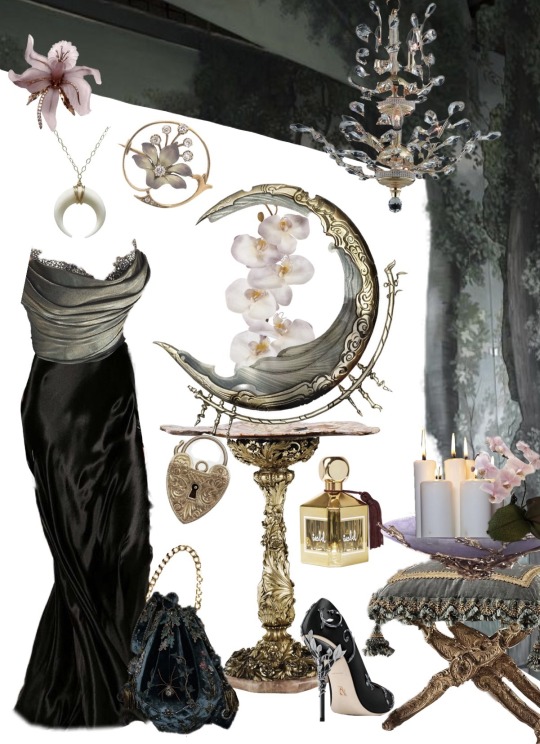
my opinion of outfit inspo for perfumes ~
MOON ORCHID BY ISABEL TOLEDO
#found this perfume called moon orchid….#*cries*#those that know…know#love between fairy and devil#chloe’s thoughts#chloe’s perfume outfits
271 notes
·
View notes
Text
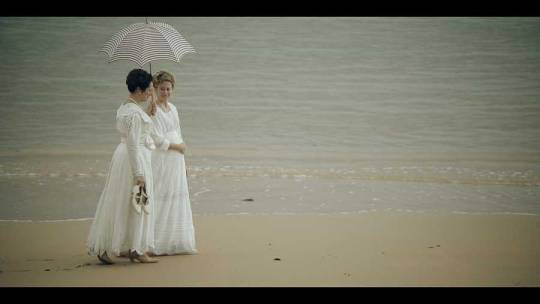
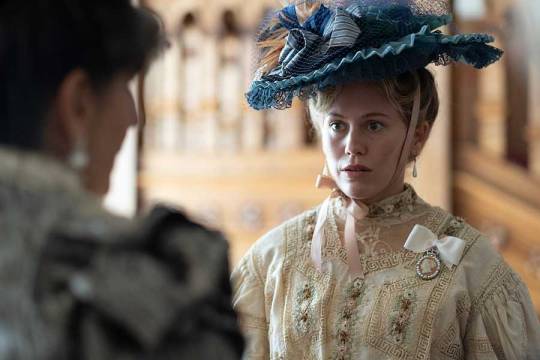


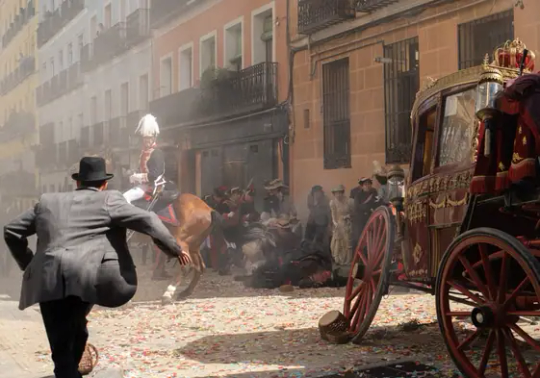



Upcoming series: Ena
In September, the filming of Ena began, a biographical series that will focus on the life of Victoria Eugenie of Battenberg, queen of Spain through her marriage to Alfonso XIII between May 31, 1906 and April 14, 1931, after being the monarchy deposed later by the proclamation of the Second Republic. Great-grandmother of the current king Philip VI of Spain, of whom she was godmother at his baptism. Throughout six chapters, the series will tell the life of Victoria Eugenie and at the same time offer a portrait of a time that changed the world, the first half of the 20th century, from 1905 to 1945. Born on October 24, 1887 in Aberdeenshire, Scotland, Ena was the daughter of Henry of Battenberg and Princess Beatrice, youngest daughter of Queen Victoria of the United Kingdom and Prince Albert of Saxe-Coburg and Gotha. Her godmother was Eugenia de Montijo, empress consort of France as Napoleón III's wife. The name of the series comes from what her friends and family called her since she was little, Ena.
The fiction is based on the novel of the same name by Pilar Eyre. Javier Olivares, who was behind the acclaimed Isabel and El Ministerio del Tiempo, will be the showrunner and plot manager for Ena. In addition to Olivares, the script is written by Isa Sánchez, Daniel Corpas and Pablo Lara Toledo. The series will be directed entirely by women: Anaïs Pareto, director of the series as a whole, in addition to four episodes, and Estel Díaz, who will direct two episodes.
“Ena is the portrait of historical moments that seem distant but are not so far away, because without them we would not understand the times we live in now,” Olivares declares in the press release sent by TVE. The writer and screenwriter remembers that Victoria Eugenie “fought to be happy in a bitter time, in which she witnessed two world wars, a civil war and a great pandemic, the tortuously called Spanish flu.”
For Pilar Eyre, author of the novel, she was "an extraordinary woman: cultured, supportive, liberal-minded, modern and very loyal." And she is excited because "finally all Spaniards can know" the story of a "misunderstood" woman. in their time, which they will always consider foreign." It is a fiction co-produced by RTVE with Ena La Serie AIE, La Cometa TV and Zona App. José Pastor, director of Film and Fiction at RTVE, has pointed out that "it is a "RTVE is proud to be able to portray this interesting historical character, from the point of view of two women directors and with Javier Olivares as showrunner, in one of its best series."
The Spanish actress of Anglo-Danish descent Kimberly Tell will play Ena and Joan Amargós will play Alfonso XIII. For her part, Elvira Mínguez will play Maria Christina von Habsburg-Lothringen, mother of Alfonso XIII. The cast is completed by Lucía Guerrero (Beatrice of Saxe-Coburg and Gotha), Raúl Mérida (Alfonso of Orleans and Bourbon), Juan Gea (Álvaro Figueroa y Torres, Count of Romanones), María Morales (María del Carmen Angoloti y Mesa, Duchess of Victoria), Pedro Mari Sánchez (Rodrigo de Saavedra y Vinent, Marquis of Villalobar), Luisa Gavasa (Eugenia de Montijo) and Joaquín Notario (José de Saavedra y Salamanca, Marquis of Viana)
Mariano Peña will play Miguel Primo de Rivera; Jaume Madaula will play the anarchist Mateo Morral, author of the attack committed at the royal wedding; Tomás del Estal will be Emilio María de Torres y González-Arnáu, and Ángel Ruiz will once again give life to Federico García Lorca, a character he already played in El Ministerio del Tiempo, among others.
The series will be filmed entirely in natural exteriors and interiors, like the Royal Palace of Madrid, the Palace of La Granja de San Ildefonso (Segovia), the Palace of Santoña (Madrid), the Palace of Fernán Núñez (Madrid), the Fort of San Francisco (Guadalajara) and the Magdalena Palace (Santander), built in 1911 by the City Council as a tribute to the monarchs and where Ena spent a good part of her summers in Spain, accompanied by the Royal Family. Filming for the series will continue until the end of December.
~~~~~~~~~~~~~~~~~~~~~~~~~~~~~~~~~~~~~~~~~~
So, the Magdalena Palace is going to be an important location during the series as a summer palace, the main filming location in Gran Hotel, and in that series Ena appeared in the episode 3×13, played by Aída Filx.
Apart from that, are we getting an Olivaresverse (XD)? Most likely not, and it's just references about his previous works as a showrunner, but there are connections between Isabel, Emdt and Ena: Michelle Jenner starring Isabel as Isabella I of Castile, then appearing in a couple of scenes in Emdt episode 1×04 and being an important figure in the lore as the foundress of the ministry (& Eusebio Poncela playing as Cisneros in both series, and also he played Cisneros in the film La Corona Partida and the Carlos Rey Emperador series); Alfonso XIII is a descendant of Isabella I of Castile; Ángel Ruiz appeard as Lorca in Emdt in 4 episodes and now he is on Ena playing as Lorca again, we don't know yet how much screentime he will get or which will his role be (secondary character most likely), but it's great to see more about him!
#Ena#period dramas#upcoming series#ena tve#victoria eugenie of battenberg#maria christina von hasburg#alfonso xiii of spain#kimberley tell#joan amargós#rtve series#pilar eyre#javier olivares#anaïs pareto#estel diaz#federico garcía lorca#ángel ruiz#elvira míngez#maria christina von hasburg-lothringen#lucía guerrero#beatrice of saxe-coburg and gotha#raúl mérida#alfonso of orleans and bourbon#juan gea#álvaro figueroa y torres#maría morales#maría del carmen angoloti y mesa#pedro mari sánchez#rodrigo de saavedra y vinent#luisa gavasa#eugenia de montijo
20 notes
·
View notes
Text










Style File The World's most elegant dressed
Iké Udé aRUDE Magazine
Foreword by Valerie Steele Introduction by Harold Koda
Collins, New York 2008, 224 pages,26x33,5cm, ISBN 9780061464201
euro 100,00
email if you want to buy [email protected]
Iké Udé's Style File is a remarkable volume that profiles more than 55 of the most influential arbiters of style in the world today. With a foreword by Valerie Steele, director of the Museum at F.I.T., and an introduction by Harold Koda, curator-in-charge of the Costume Institute at the Metropolitan Museum of Art, this beautifully designed book provides an intimate perspective on these unique and influential men and women, offering frank insight to their views on fashion and life through evocative interviews and lush photography. Included among the many notable designers, artists, and public figures are John Galliano, Oscar de la Renta, Carolina Herrera, Isabel and Ruben Toledo, Victoire de Castellane, André Leon Talley, Dita Von Teese, Francesco Clemente, Christian Louboutin, Diane von Furstenberg, Lapo Elkann, Frédéric Malle, Hamish Bowles, Scott Schuman, Romeo Gigli and Lara Aragno, Seidou Keïta, Iris Apfel and many others.
Style File also features numerous editorial features that deepen the book's exploration of enduring style. Annotated photo albums examine the work of premier style-making photographers such as Scavullo, Timothy Greenfield-Sanders, Coreen Simpson, Seydou Keïta, and Maripol. Illustrated essays including those by journalist and professor Nicholas Boston on the popular blog The Sartorialist and by George Pitts, associate chair of photography at the Parsons School of Design, on the Motown Look explore a range of fashion eras, influences, and influencers, from the Belle Epoque to the late visionary stylist Isabella Blow. Evocative archival and portrait photography of fashion legends from Marchesa Casati to Diana Vreeland, select aRude fashion editorials that point to recurring themes in the intertwined cultural-political-style landscape, and style-related aphorisms are featured throughout. This comprehensive, gorgeous book is a rich exploration of personal style that belongs in every well-dressed library.
03/05/24
#Style File#aRUDE Magazine#studioSimonetti#Hamish Bowles#Romeo Gigli#Scott Schuman#Diana Vreeland#fashion books#fashionbooksmilano
8 notes
·
View notes
Text
SAINT OF THE DAY (September 1)

Beatrice of Silva, born Beatriz de Menezes da Silva, was a Portuguese noblewoman who became the foundress of the Monastic Order of the Immaculate Conception.
She was born in 1424 in Cuerta, Portugal.
She was the daughter of the Count of Viana and the sister of Saint Amadeus of Portugal.
She was raised in the household of the future queen, Isabel of Portugal. She then spent some time in her royal court in Castile following the Queen's marriage to John II.
Although Isabel and Beatrice were friends, Isabel became jealous of her beauty and had her locked up.
When Beatrice was imprisoned, she had a vision telling her she should found a new order dedicated to the Mother of God.
Beatrice managed to escape her cell and spent the next 37 years living in the Dominican monastery in Toledo, although she never became a member of the order.
In 1489, by permission of Pope Innocent VIII, the nuns adopted the Cistercian Rule.
They bound themselves to the daily recitation of the office of the Immaculate Conception and were placed under obedience to the ordinary of the archdiocese.
The foundress determined on the religious habit, which is white, with a white scapular and blue mantle, with a medallion of Mary under her title of the Immaculate Conception.
Beatrice died in the monastery she had founded on 16 August 1492. Her remains are still venerated in the chapel of that monastery.
Beatrice was beatified by Pope Pius XI on 28 July 1926. She was canonized by Pope Paul VI on 3 October 1976.
She is venerated as the patron saint of prisoners as well as the Conceptionist Nuns, the religious order she founded.
Her feast days are celebrated on August 17 (her principal feast day), August 16 and 17 on some calendars, and September 1 on other calendars.
#Saint of the Day#St. Beatrice da Silva Meneses#Beatriz de Menezes da Silva#Monastic Order of the Immaculate Conception#Cistercian Rule#Conceptionist Nuns
4 notes
·
View notes
Photo




Adriana Lima for Isabel Toledo spring summer 1998.
#Adriana Lima#isabel toledo#spring summer#1998#fashion show#runway#black and white#goddess#angel#gorgeous
15 notes
·
View notes
Text

F: THE CONQUEST OF GRANADA
F1: King Fernando II of Aragon, late 1480s
Fernando was a capable and courageous field commander, who was nearly captured or killed during a number of his campaigns against Granada. He is depicted here in an armour attributed to him and preserved in the Kunsthistorischesmuseum in Vienna. It is of late 15th-century Italian style but incorporates a number of Spanish details, such as the ‘fish-tail’ plackart covering the lower part of his breastplate.
F2: Queen Isabel I of Castile, late 1480s
During the first half of the war against Granada the energetic ‘queen-at-arms’ served as political advocate, war counsellor, and chief coordinator for the provision of troops, supplies, and money from Madrid. But to maintain the loyalty of their heterogeneous army it was necessary for the ‘Christian Monarchs’ to keep themselves visible to the troops, and during the later campaigns Isabel moved to the frontline camps. There she established both field kitchens and field hospitals for the wounded and sick, and came to be regarded by many of her soldiers as another Joan of Arc (a figure whom Isabel revered). Her appearance here is based on an image carved on a choir stall from Toledo Cathedral, where she is portrayed entering the conquered city of Gor in armour and carrying a mace of command.

- Armies of Castile and Aragon 1370–1516, John M.D. Pohl PhD, Illustrated by Gerry Embleton
7 notes
·
View notes
Text

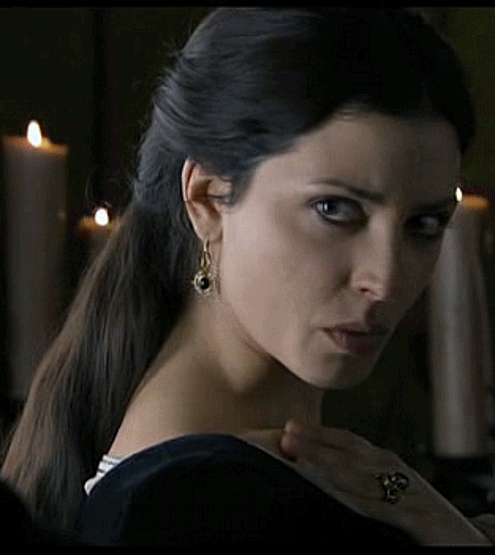

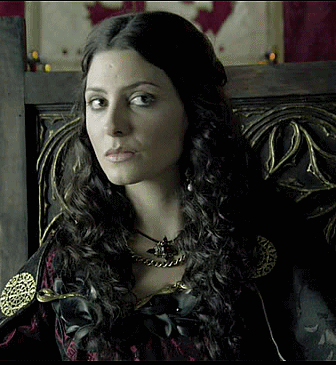
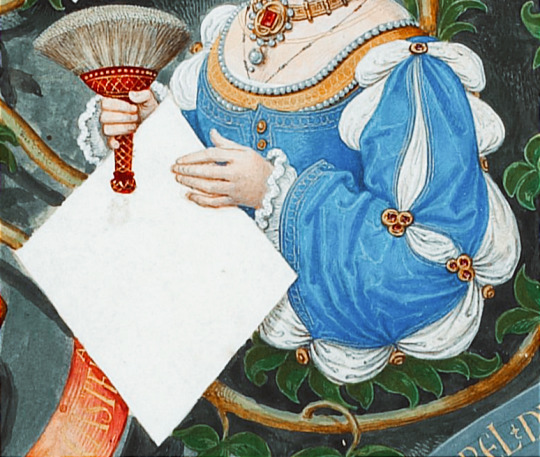
Juana of Portugal (1439-1475)
She was the posthumous daughter of King Duarte of Portugal and his wife Leonor of Aragon. Juana grew up in exile with her mother, due to the intrigues of the Portuguese court, and lived first at the Monastery of Santa María in Medina del Campo and later in Toledo, where Leonor of Aragon died. At the age of six, Juana returned to the Portuguese court of her brother Afonso V.
In 1455 the young Juana married her cousin Enrique IV of Castile, who had repudiated his first consort after thirteen years of marriage. The couple produced no children. The marriage was annulled on the grounds of an impotence that was specific rather than general, an impotence that applied only to Enrique’s relationship with Blanca of Navarre. Yet such an extraordinary explanation amounted to a case of maleficium (spell), with the clear implication that Blanca was the guilty party, and in addition she was obliged to leave Castile and return to Navarre.

Juana of Portugal was described as beautiful, cheerful and coquettish. The sources speak of the licentiousness introduced by the young Queen and her ladies in the austere Castilian court. They liked to use perfums, makeups, dresses that displayed too much décolletage, and flirting with men. One of her ladies, Guiomar de Castro, was King’s mistress, causing the anger of the Queen, and other, Mencía de Lemos, was Cardinal Mendoza’s mistress.
Six years after her wedding, Queen Juana was pregnant. Some say it was a miracle, others that it was the result of some sort of artificial insemination that the couple had tried, as was recorded by a german traveler. During this period, Juana insisted that Enrique's teenaged brother and sister, Alfonso and Isabel, forcefully be brought to the court and away from their sick mother. Many saw this as a way of making sure her daughter's path to the crown would encounter no obstacles. The Queen gave birth to a daughter named Juana, officially proclaimed heir to the Crown of Castile and created Princess of Asturias.
Queen Juana planned the marriage between her sister-in-law, Isabel of Castile, and her brother Afonso V of Portugal, and her daughter with her nephew Prince Joao. She wanted with these weddings an annexation of the Crown of Castile with the kingdom of Portugal.
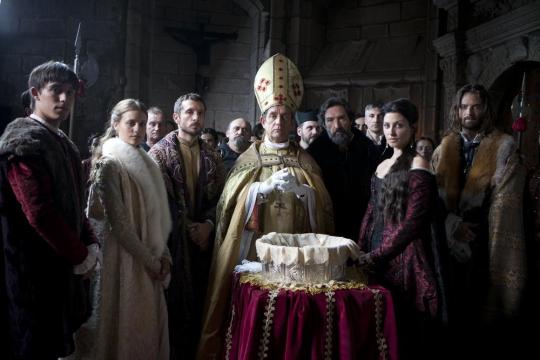
In early 1460s, Castilian nobles became dissatisfied with the rule of Enrique IV, and believed that Princess Juana was not King’s daughter. They called her la Beltraneja, a mocking reference to her supposed illegitimacy. Propaganda and rumour encouraged by the league of rebellious nobles argued that her father was Beltrán de la Cueva, a royal favorite of low background who had been elevated to enormous power by Enrique and who, by some, has been suggested as Enrique's lover.
Many nobles refused to recognise Princess Juana and preferred that Enrique instead name his younger half-brother, Alfonso as his heir. This was agreed to on the condition that Alfonso marries little Juana. Not long after this, Enrique reneged on his promise and began to support his daughter's claim once more. The nobles in league against him conducted a ceremonial deposition-in-effigy of Enrique outside the city of Avila and crowned Alfonso as a rival king.
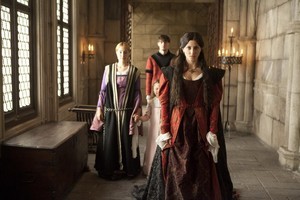
Queen Juana and her daughter were removed from the court. They lived in various castles as hostages, separately or together, protected by a faction of the nobility. The love affair of Queen Juana with the Bishop Fonseca’s nephew, Pedro of Castile, and the birth of her two illegitimate sons, caused great scandal. As a result of the need to conceal the pregnancy of her illegitimate sons, Juana of Portugal is considered the inventor of the farthingale.
In 1468, Alfonso of Castile died and Princess Juana was stripped of her succession-rights. Her aunt, Infanta Isabel, was placed before her, on condition that Isabel marry a man chosen out by the monarch. Queen Juana and her daughter sent a formal appeal to the Supreme Pontiff. Enrique accepted to divorce his wife and send her to Portugal, but Juana remained in Castile as king's wife, though separated of her husband. Isabel married Fernando of Aragon with the opposition of Enrique IV.
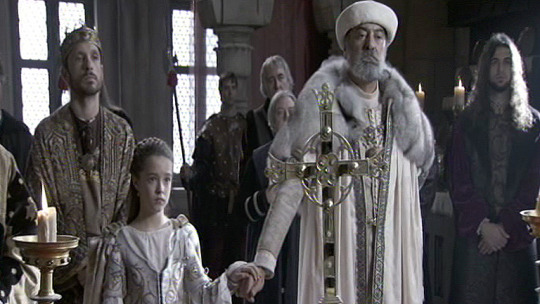
In 1470, Princess Juana was engaged and then married by proxy to the Duke of Guienne, brother of Louis XI of France. In the face of the French ambassador, King Enrique and Queen Juana swore before a crucifix that the Princess was their legitimate daughter. The French marriage never consummated, because the duke died two years later in France. Queen Juana always defended her daughter’s rights to the throne, and she had an active political participation. Queen Juana tried to get the support of nobles and cities, but with meager success and without palpable results. In 1474, Enrique IV died at the Alcázar of Madrid and rumors circulated that the late monarch had been poisoned, his wife and his daughter demanded an investigation. Queen Juana died a few months after her husband’s death at the age of 36. In the last months of her life, she lived at the convent of San Francisco in Madrid. The cause of her death is unknown.
Bárbara Lennie played Juana of Portugal in TV series "Isabel"
#juana de portugal#juana de avis#joan of portugal#women in history#spanish history#barbara lennie#Isabel tve#enrique IV#juana la beltranejs#juana de trastamara#juana de castilla
26 notes
·
View notes